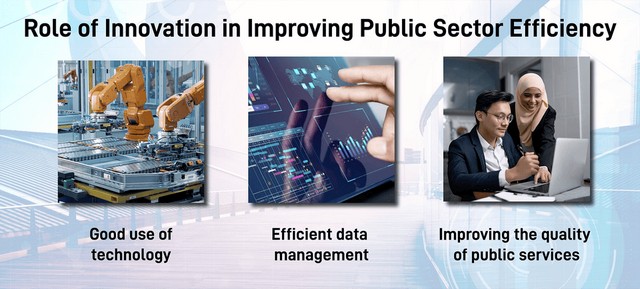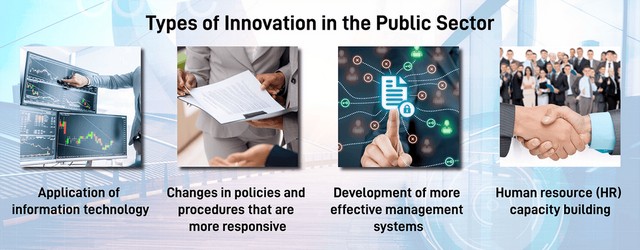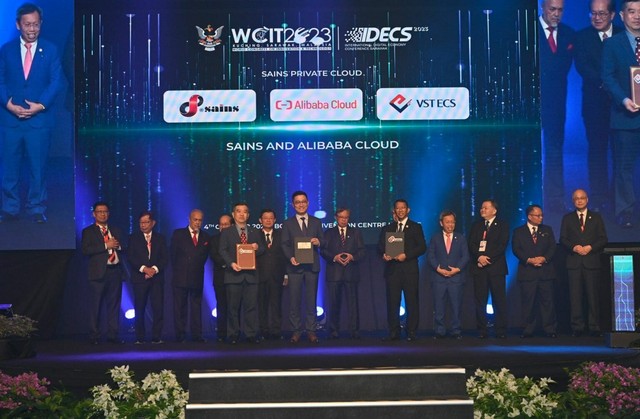Innovation has been at the forefront of transforming both private and public sectors around the globe, and Malaysia’s public service is no exception. In recent decades, the need to improve efficiency, enhance service delivery, and adapt to new societal expectations has pushed the public sector to adopt innovative approaches. This shift reflects the evolving role of the public sector, from one that merely administers government functions to a more dynamic entity that drives transformation through innovative solutions.
The Role of Innovation in Public Service
In the context of public service, innovation moves beyond introducing new technologies or tools; it’s about fundamentally rethinking how services are delivered and how policies are implemented. For multiple countries, including Malaysia, innovation acts as a catalyst for transformation, enabling the government to meet rising public demands and tackle complex challenges.

Public sector innovation aims to provide services that are more effective, efficient, and tailored to the needs of citizens. It’s driven by the understanding that the conventional methods of governance and service delivery no longer suffice in a rapidly changing world. In fact, innovation in the public sector can lead to better resource management, improved transparency, greater citizen engagement, and a more adaptable workforce.
Institutionalising Innovation in Malaysia’s Public Service
Over the past years, Malaysia has faced major structural challenges like debt, deficit pressures, technology , innovation and globalisation. Along with the need to address global crisis like climate change, economic and developmental setbacks impeded by the pandemic, the Malaysian public service face a greater need than before to be more adaptable, responsive, flexible, and resilient in providing more effective, efficient, and reliable services.

The Malaysian government has acknowledged the importance of embedding innovation into its public service apparatus since the 11th Malaysia Plan (2016-2020). The concept has since been regaled as a source of growth and sustainability and serves as a key competence to achieve country status of high revenue, as sentiment echoed in the National Science Technology and Innovation Policy (STIP) 2013-2020.
In delivering public services and supporting STI activities for the nation, the government face high expectations of providing an effective and well-functioning ecosystem for policy executions and enforcement. To facilitate innovation across all government sectors and levels, the public service and civil servants were openly encouraged to participate in the national movement to transform and improve the government’s delivery system.
The innovation agenda has led to dramatic changes in its sustainable development framework to reshape and restructure the current public sector frameworks and processes. These changes led to the establishment of key programs like the Government Transformation Plan (GTP) and National Key Result Areas (NKRA). The GTP programme in particular had introduced wide-ranging changes to structural, and procedural aspects of the public bureaucracy, the operational principles, and the values of public officials. Overall, both programmes existed to revamp the traditional image of public service to become more accessible, responsive, better, and speedier in providing valuable public services at minimised costs.
Another key development was the appointment of the Malaysia Administrative Modernisation and Management Planning Unit (MAMPU) as the agency responsible for overseeing and transforming the public sector and public services of the nation. Together with the Malaysia Performance Management & Delivery (PEMANDU), Institut Pentadbiran Awam Negara (INTAN) and Kumpulan Innovative & Kreatif unit (KIK), they work in tandem to propel the nation’s public sector innovation.
For more than 10 years or so, MAMPU introduced among the most notable awards for public service innovation; the Anugerah Inovasi Sektor Awam (AISA) and the Anugerah Inovasi Perdana Menteri (AIPM) awards. The award programme have seen success since the declaration of the first winners back in 2010, and the government has since intensified the initiative by commercialising the end products of those innovative activities and efforts through the Guideline of Cultivating and Strengthening the Innovation in Public Sector 2016. To further support the development of these innovations, RM400 million was allocated for research and development activities & ensuing IP protection for public service innovation in 2018.
In tandem with innovation, the Malaysian government is also actively promoting digital transformation through initiatives with an expected digital economy contribution of at least 25.5% by 2025. As part of the digital drive, the Malaysian Digital Economy Corporation (MDEC) introduced Malaysia Digital in 2022, a nationwide strategic initiative aimed at driving digital adoption through policy, talent building, and infrastructure development. This development spurred the establishment of additional initiatives like the Malaysia Digital Catalytic Programmes (PEMANGKIN) to establish the nation as a digital nomad hub.
The direction of development holds promise for a more efficient and streamlined public service. A 2021 survey conducted by VMware found that 45% of respondents indicated that they are happy to interact digitally with the Malaysian government, with 58% being more than willing to share their data to contribute towards the improvement of public service delivery. With 79% of Malaysians defining themselves as being “digitally curious” or “digital explorers,” a significant proportion of Malaysia’s residents are embracing digital services. As such, the government is held to high expectations to deliver cutting-edge digital experiences, seamlessly and securely.
Innovation Efforts in Sarawak’s Public Service
Sarawak has similarly taken bold steps in embedding innovation within its public sector, particularly under the Sarawak Digital Economy Strategy 2018-2022, now advancing to the Post Covid-19 Development Strategy 2030, and the Sarawak Digital Economy Blueprint 2030. These comprehensive frameworks collectively aim to drive digital transformation across public services, making them more efficient, transparent, and responsive to the needs of its people.
One of Sarawak’s flagship initiatives is the Service Sarawak Digital program in 2018, which envisions a fully digitised government. Through the concept of “One Government at Your Service,” it serves as a single online identity for the Sarawak government’s digital services to provide a more secure access and streamline the registration process by eliminating the need to re-register for different online services, making it convenient for the people. By utilising smart technology such as cloud computing and integrated platforms, the Sarawak state government is well on its way to reducing administrative inefficiencies and offering citizens a seamless public service experience.
Additionally, Sarawak’s citizen-centric smart solutions initiatives focuses on providing services that directly address the needs and convenience of the population. Through platforms like SarawakPay (now known as S Pay Global), a state e-wallet system, Sarawak has enabled smoother transactions between citizens and public agencies, including bill payments and fines. This kind of innovation is a perfect example of how technology can improve not just service delivery but overall public satisfaction.

In 2023, Sarawak has established the Transformative and Innovation Unit and the Public Service Digitalisation Unit to further introduce digitalisation in the public sector. By 2025, the state government aims to further enhance the aforementioned initiatives as they achieve to be the most trusted digital identity.
Much more recently in October 2023, they have announced an expanded collaboration between Alibaba Cloud and Sarawak Information Systems (SAINS) to accelerate Sarawak’s digital transformation, with a focus on improving Sarawak’s digital public services and fostering sustainable practices through innovative cloud and AI solutions with the goal to modernise and improve the efficiency of public sector operations.
Institutional Support for Public Service Innovation
Innovation in the public sector cannot thrive without institutional support. Malaysia has made strides in establishing frameworks that support the growth of innovation within its public services. This includes both financial and structural support, ensuring that civil servants have the necessary resources to pursue innovative projects.

Leadership’s Role in Driving Innovation
Leadership is key to fostering a culture of innovation within the public service. Participatory leadership, where leaders encourage decision-making at all levels, has proven to stimulate creativity and motivate employees. In Malaysia, this type of leadership is particularly important, as it helps overcome the rigidity often associated with public sector operations. Encouraging civil servants to take part in innovation projects builds an inclusive environment where creativity can thrive.
Participatory leadership also promotes a collaborative and adaptive approach to problem-solving. When leaders foster open communication and actively involve employees in decision-making, they create a climate that supports experimentation and innovation. As a result, employees are more engaged and committed to public service transformation.
Citizen-Centric Innovation
Another critical aspect of public service innovation is its focus on citizens. Innovation must centre on creating value for the public, ensuring that new initiatives align with the needs and expectations of citizens. Malaysian public services are increasingly adopting citizen-centric approaches by utilising digital platforms and feedback mechanisms to improve service delivery.
For instance, platforms like Service Sarawak has provided avenues for citizens to engage directly with government services online, reducing the need for physical interaction and improving the overall efficiency of service delivery. Such platforms demonstrate how technology and innovation can simplify processes, provide seamless access to services, and ultimately enhance citizen satisfaction.
By leveraging digital tools and emerging technologies, the Malaysian government aims to deliver public services that are more personalised and accessible. These efforts signal a shift toward a more inclusive and user-friendly approach, where citizens’ needs are prioritised.
Innovation has become an indispensable part of public service transformation in Malaysia. With strong institutional support, forward-thinking leadership, and a focus on digital transformation, Malaysia’s public sector is well-positioned to address the challenges of the 21st century. As the government continues to embed innovation in its practices, the public service will increasingly become a catalyst for broader societal and economic progress.
In this way, public service innovation is not just a matter of modernisation but a strategic effort to deliver more value, efficiency, and adaptability to the people it serves. Through sustained efforts in fostering an innovative climate, participatory leadership, and citizen-centred services, Malaysia’s public sector is set to remain a dynamic and evolving force.
References
- “The Role of Innovation In Improving Public Administration Efficiency”
- “Three ways Malaysia’s public sector can pursue innovation”
- “Malaysians Look Forward to More Digital Citizen Services”
- “The determinants of public sector innovation in Malaysia”
- “The Effects of Innovation Climate and Leadership on Innovation Performance: A Case Study in Malaysian Public Sector”
- “Sarawak Creates New Units in Line With Public Sector Digitalisation Agenda”
- “Delivering AL-Powered Public Services: The Intersection of Efficiency and Sustainability”
- “Challenges and Barriers in Public Services Innovations in Malaysia”






